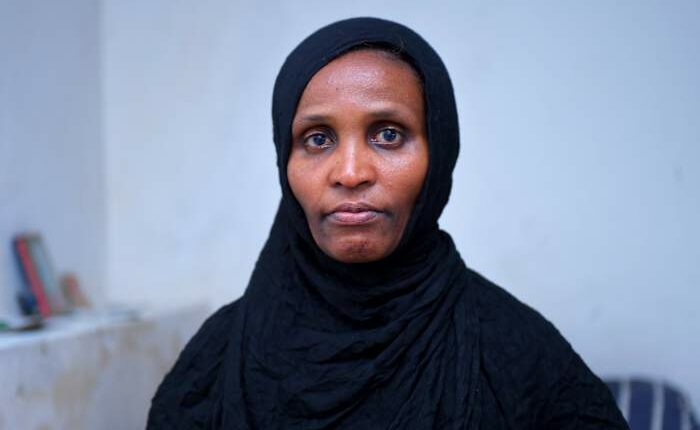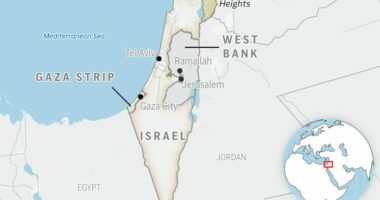Share this @internewscast.com

ADDIS ABABA – When 19-year-old Nigus Yosef informed his parents he intended to leave their home in Ethiopia’s Tigray region to reach Saudi Arabia, they pleaded with him to stay.
Two of their children had previously attempted the journey through the Gulf of Aden and conflict-ridden Yemen. Yosef’s brother is currently imprisoned in Yemen for illegal entry. His sister managed to get to Saudi Arabia illegally, which complicates any possibility of her returning home.
On August 3, 2025, Yosef, along with five friends from Adi Qeyih, boarded a vessel headed for Yemen. That evening, the boat capsized. Of the nearly 200 people aboard, only 56 survived, and Yosef was not among them.
“His parents are in deep shock and grief,” his uncle, Redae Barhe, said in a telephone interview. “They can’t even voice their sorrow.”
Nigus Yosef is one of 132 people missing from the boat that sank this month, one of countless individuals from African nations who have disappeared on the perilous journey for a better life.
Journeys fraught with danger
Families left behind are aware of the high risks involved. Boats are regularly overfilled and not equipped to handle rough waters. Once ashore, migrants face other hazards. Vulnerable and with limited resources, they become easy targets for traffickers and kidnappers.
Senait Tadesse recounts that her 27-year-old daughter reached Yemen but was captured by kidnappers who communicated with Tadesse through Facebook, demanding a US$ 6,000 ransom for her release.
Tadesse said in an interview with The Associated Press in the capital, Addis Ababa, that she sold her car and all her jewelry to raise the cash and deposited the money in an Ethiopian bank account.
But the kidnappers demanded more. She sold all her belongings; they still wanted more. Not knowing what else to do, she went to the police, armed with the local bank account number that the kidnappers had been using.
Meanwhile, she was on Facebook, trying to get news of her daughter. Eventually, a post from a survivor confirmed that Tadesse’s daughter had been killed. To date, no arrests have been made.
Driven by desperation
Although Ethiopia has been relatively stable since the war in the country’s Tigray region ended in 2022, youth unemployment is high and there are still pockets of unrest.
“Many young people no longer see a future for themselves within a nation that does not prioritize their needs,” explained Yared Hailemariam, an Ethiopian human rights advocate based in Addis Ababa. “The cause of this migration is lack of economic opportunities and growing conflicts. Young people are faced with a choice of either taking up arms to fight in endless conflicts, or providing for their families.”
The war in Tigray was the reason why Nigus Yosef never finished school. When the conflict started in 2020, he was in 7th Grade, and he dropped out to join the Tigray armed forces. When the ceasefire was signed in 2022, he came back home, but couldn’t find a job. After three years, he was desperate.
Residents in the region say that traffickers seize on that desperation, and that their networks extend even into remote areas and rural villages.
Eden Shumiye was just 13 when she left Adi Qeyih with Yosef and his friends. Her parents say that she was preyed on by people smugglers during the town’s public market day, and that they convinced her to leave with the group. Her parents heard nothing from her until one of the other migrants called them when they reached Wuha Limat, near the Ethiopia-Djibouti border. The news left them sick with worry.
After the boat capsized, a relative of one of the survivors managed to send a voice message to them from Saudi Arabia via the messaging app Imo, confirming that Eden’s dead body had been recovered. Of the six young people who left Adi Qeyih, only two survived.
“Her mother is heartbroken,” Eden’s father, Shumiye Hadush, told The Associated Press. “The pain is truly overwhelming.”
Ethiopia issues a warning
In response to the recent tragedy, the Ethiopian government issued a statement warning citizens “not to take the illegal route,” and to “avoid the services of traffickers at all cost,” while urging people to ”pursue legal avenues for securing opportunities.”
But Girmachew Adugna, a migration scholar specializing in Ethiopia and the Horn of Africa, points out that legal migration channels are slow and time-consuming. “Passports are hard to obtain due to rising costs,” he says. “Young people often have little or no access to legal migration pathways, which leads them to migrate through irregular means.”
More than 1.1 million Ethiopians were classified as migrants who left their home country and were living abroad in 2024, up from about 200,000 recorded in 2010, according to United Nations figures.
In spite of Yemen’s civil war, the number of migrants arriving there has tripled from 27,000 in 2021 to 90,000 last year, the U.N. International Organization for Migration, or IOM, said last month.
To reach Yemen, migrants are taken by smugglers on often dangerous, overcrowded boats across the Red Sea or Gulf of Aden. The IOM said at least 1,860 people have died or disappeared along the route, including 480 who drowned.
“Our youth are dying because of this dangerous migration,” says Eden Shumiye’s father Hadush. “They fall victim to the cruelty of traffickers. When will this tragedy come to an end?”
___
Associated Press writer Khaled Kazziha in Nairobi, Kenya contributed to this report.
___
For more on Africa and development: https://apnews.com/hub/africa-pulse
The Associated Press receives financial support for global health and development coverage in Africa from the Gates Foundation. The AP is solely responsible for all content. Find AP’s standards for working with philanthropies, a list of supporters and funded coverage areas at AP.org.
Copyright 2025 The Associated Press. All rights reserved. This material may not be published, broadcast, rewritten or redistributed without permission.













